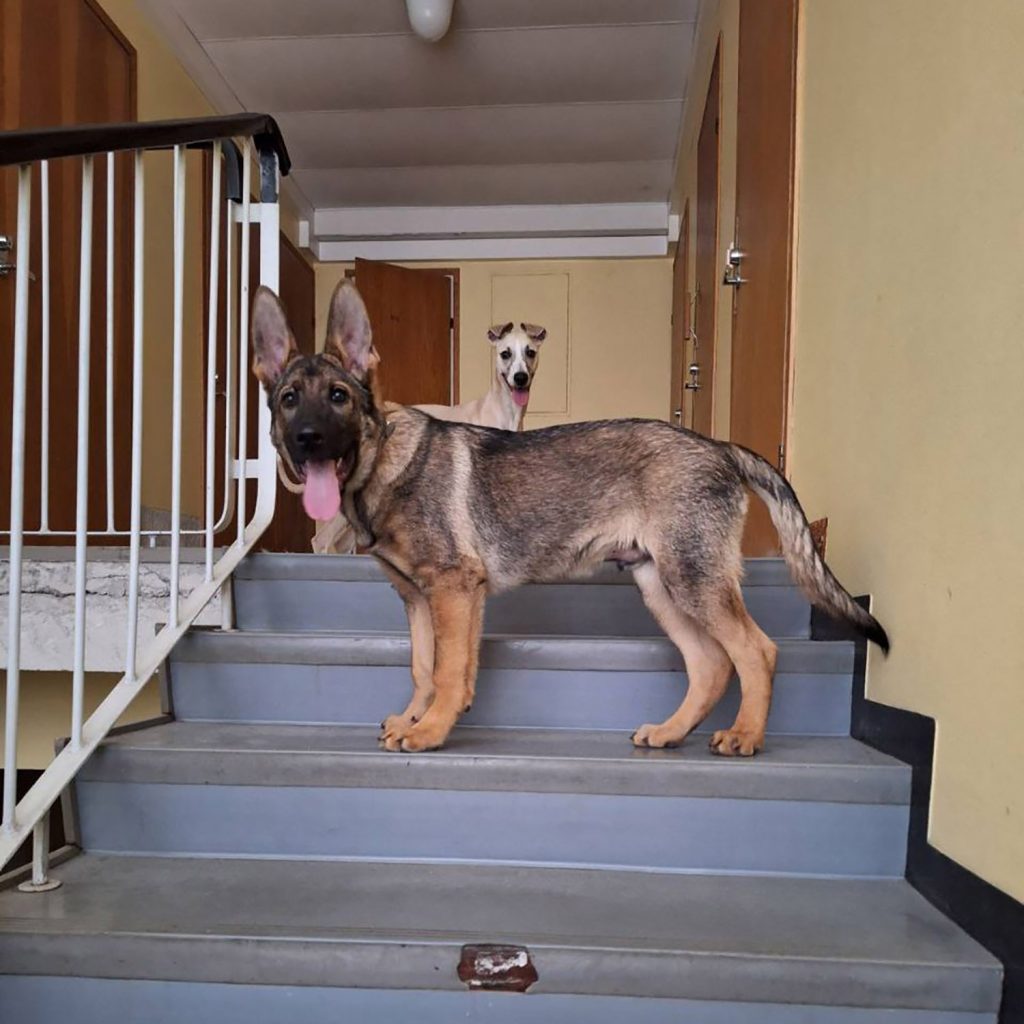I met Father Anders at the door of the rectory. He led me down a short hallway to a door that bore a sign: “Huom. Koira vapaana sisällä, Notice: Dog loose inside.”
My own bewildered companion glanced around, searching for the source of the rustling and quiet barks. The door opened, and from the crack sprang a four-month-old, bright-eyed puppy, who charged energetically at his new, slightly hesitant playmate. The lively newcomer was a Schäfer, or Deutscher Schäferhund, more familiarly known as a German Shepherd. He had been carefully chosen based on recommendations from acquaintances and positive personal experiences, and humorously for his name: a priest is the shepherd of their parish, so what better dog for a priest than a shepherd dog!



How did you choose the name Pepe?
“I couldn’t copy a friend’s idea, nor did I dare name my dog ‘Bishop.’ I drew inspiration from the Italian classic Don Camillo, naming him Pepe as a short form of Peppone. In the books, the priest and the communist mayor are, in a way, adversaries but also inseparable.”
You’re an animal lover, you ride horses… What inspired you to get a dog?
“I had thought about it for a long time, and actually, the water damage in the rectory made it possible. A few years ago, the emeritus bishop suggested I get a cat. But other priests might have allergies, which makes having a pet difficult. Living alone in a rental home, that isn’t an issue.”
Our thoughts drifted with the dogs as they raced upstairs to continue their playful wrestling. Their scampering led us to the stairs, where we could keep sight of them through the white balustrades. From between the railings, the damage caused by the water leak in the rectory was visible, such as the uneven and rough flooring upstairs. On the left side, there was a large, oval-shaped dent that Father Anders had covered with a rug to make it more comfortable—a perfect play area for the dogs.
I asked whether it was common for priests to have dogs. I’d heard that Franciscans might keep various animals, but in Finland, it seemed like a novel idea.
“It’s more typical in England,” Father Anders explained, recounting a story of a priest friend whose dog, stylishly named Deacon, would quietly stay inside the church while his owner celebrated Mass.
Do you find time for both your responsibilities as a parish pastor and caring for and training a puppy?
“That depends on the parish. In a large, active parish, there might be less time. It also depends on routines. It works if you can pace your tasks—walking a puppy might only take 20 minutes at a time. Most of the work piles up on weekends, so weekdays are much freer. Pepe is also fine being alone and finds ways to entertain himself.”
Does having a dog limit where you can go?
“Not really. I can take him along when I drive to celebrate Mass in the diaspora. If needed, I get help from a friend who owns the kennel, who assists with training as well—out of love for the breed.”
Has having a dog helped you meet new people?
“When talking with exchange students and international students, I’ve learned they often find it hard to connect with others. In Finland, there are two ways to do so: get a dog or start smoking!” Father Anders said with a laugh, quickly adding that he recommends the former.
How have people reacted to a priest with a German Shepherd?
“Not much at all.” And of course—on a cold day, you can’t see a dog behind a scarf, so naturally, no one has paid it much attention.
We chatted a bit more about dog care and the state of the rectory, snapping a few photos outside the church. Our final words were interrupted by waves and greetings directed at Pepe, who had already become a favorite among the parish children in just a short time.


The German Shepherd is considered the world’s most versatile service dog. Its adaptability and weather resistance make it suitable for all service dog trials and a popular breed for official use. A German Shepherd’s temperament must be balanced, strong-nerved, confident, absolutely unprejudiced (not in a state of irritation), very gentle, attentive, and trainable. It must have courage, a willingness to fight, and resilience—traits required of companion, guard, protection, service, and herding dogs. (Source: hankikoira.fi) (Text edited for clarity and cohesion.)